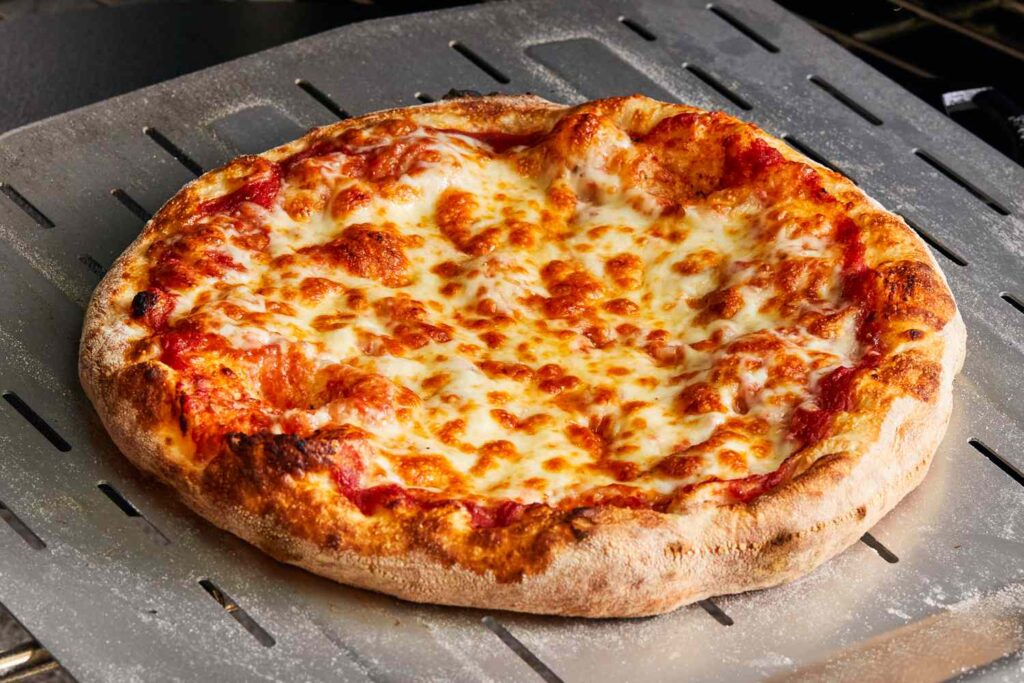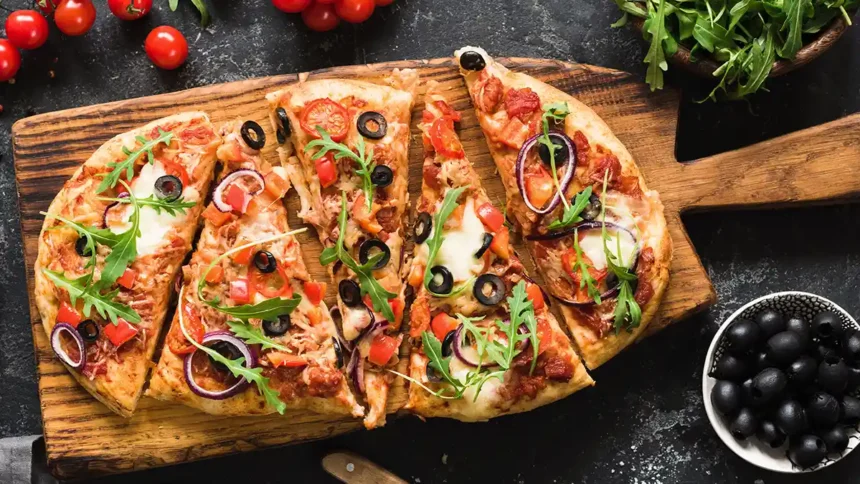Introduction
Piza, a universally beloved dish, has a rich history and cultural significance that spans continents. From its humble beginnings in Italy to its status as a global culinary phenomenon, piza has evolved in countless ways, adapting to local tastes and traditions. This article explores the origins, evolution, varieties, and cultural impact of piza, offering a thorough understanding of this iconic food.
Historical Background
Origins in Ancient Times
The concept of Piza can be traced back to ancient civilizations where flatbreads topped with various ingredients were a staple. The ancient Egyptians, Greeks, and Romans all had their versions of flatbreads. The Greeks, for example, baked flatbreads called plakous, which were topped with oils, herbs, and cheese.
The Birth of Modern Piza in Naples
Modern pizza as we know it originated in Naples, Italy, in the 18th and early 19th centuries. Initially, pizza was a dish for the poor, sold by street vendors and consumed quickly. These early pizzas were simple, with toppings like garlic, salt, lard, and cheese. Tomatoes, which were brought to Europe from the Americas, became a common topping in the late 18th century, transforming pizza into the dish we recognize today.
Margherita Piza
One of the most famous types of pizza, the Margherita, was created in 1889 to honor Queen Margherita of Savoy. Legend has it that pizza maker Raffaele Esposito created a pizza featuring tomatoes, mozzarella, and basil, representing the colors of the Italian flag. This pizza became known as Pizza Margherita and remains a classic to this day.
Piza’s Global Journey
Piza in the United States
Piza was introduced to the United States by Italian immigrants in the late 19th and early 20th centuries. The first pizzeria in the U.S., Lombardi’s, opened in New York City in 1905. Piza quickly gained popularity, especially in urban areas with large Italian communities.
Regional Variations in the U.S.
Over time, various regional styles of Piza emerged across the United States:
- New York-Style Piza: Characterized by its thin, foldable crust, New York-style pizza is often sold by the slice and topped with tomato sauce and mozzarella cheese.
- Chicago Deep-Dish Pizza: This style features a thick, buttery crust and is baked in a deep pan. The toppings, including cheese and chunky tomato sauce, are layered in reverse order, with cheese on the bottom and sauce on top.
- California Pizza: Known for its innovative toppings, California pizza often features non-traditional ingredients like goat cheese, artichokes, and smoked salmon.
- Detroit-Style Pizza: This rectangular pizza has a thick, crispy crust and is topped with tomato sauce and cheese that extends to the edges, creating a caramelized cheese border.
Piza Around the World
Piza’s global popularity has led to the creation of unique styles in various countries:
- Italy: While traditional Neapolitan pizza remains popular, other regions have their own variations. Roman pizza, for example, has a thinner, crispier crust.
- Brazil: Brazilian pizza often features unique toppings like green peas, corn, and catupiry (a type of soft cheese).
- Japan: Japanese pizza is known for its inventive toppings, such as mayonnaise, seafood, and teriyaki chicken.
- India: Indian pizza incorporates local flavors, with toppings like tandoori chicken, paneer, and curry sauce.
Ingredients and Techniques
Dough
The foundation of any pizza is its dough. Traditional Neapolitan pizza dough is made with just four ingredients: flour, water, salt, and yeast. The dough is kneaded and left to rise, then shaped by hand. The key to a great crust lies in the fermentation process, which develops flavor and texture.
Sauce
Pizza sauce is typically made from tomatoes, with variations depending on the style of pizza. Neapolitan pizza uses simple tomato sauce made from crushed San Marzano tomatoes, while other styles might include cooked sauces with herbs and garlic.
Cheese
Mozzarella is the most common cheese used on pizza, valued for its melting properties and mild flavor. Fresh mozzarella is often used on Neapolitan pizza, while other styles might use low-moisture mozzarella, provolone, or a blend of cheeses.
Toppings
Pizza toppings vary widely based on regional preferences and personal tastes. Classic toppings include pepperoni, sausage, mushrooms, and bell peppers, but the possibilities are endless. Creative toppings like arugula, figs, and truffle oil have become popular in gourmet pizzerias.
Baking Techniques
The baking method greatly influences the final product. Traditional Neapolitan pizza is baked in a wood-fired oven at high temperatures (around 900°F) for a short time, resulting in a crispy, charred crust. Other styles, like Chicago deep-dish, are baked in conventional ovens at lower temperatures for a longer duration.
Health and Nutrition
Pizza can be both nutritious and indulgent, depending on its ingredients and preparation. A basic pizza provides carbohydrates, protein, and fats, along with vitamins and minerals from the toppings. However, the nutritional profile can vary:
- Healthier Options: Opt for whole-grain crusts, lean proteins, and plenty of vegetables to make a healthier pizza. Using less cheese and choosing low-fat options can also reduce calories and fat content.
- Indulgent Choices: Pizzas with thick crusts, extra cheese, and processed meats like pepperoni and sausage are higher in calories, saturated fats, and sodium.
- Special Diets: Gluten-free crusts are available for those with gluten intolerance, and vegan pizzas can be made with plant-based cheeses and meat substitutes.
Cultural Impact

Piza in Popular Culture
Piza has a significant presence in popular culture, often depicted in movies, TV shows, and music. Iconic scenes, like the Piza delivery in “Home Alone” or the Teenage Mutant Ninja Turtles’ love for Piza, have cemented its status as a cultural icon.
Piza and Community
Piza has a unique ability to bring people together. From pizza parties to family dinners, it is often shared among friends and loved ones. Pizzerias serve as community hubs, where people gather to enjoy good food and company.
Piza Competitions and Festivals
Pizza-making has become an art form, with competitions and festivals celebrating the craft. Events like the World Pizza Championship in Parma, Italy, and the International Pizza Expo in Las Vegas showcase the skills of top pizzaioli (pizza makers) from around the world.
The Future of Piza
As culinary trends evolve, so does Piza. Here are some emerging trends and innovations:
- Artisanal and Gourmet Pizas: There is a growing demand for high-quality, artisanal pizzas made with premium ingredients and innovative toppings.
- Sustainability: Pizzerias are increasingly focusing on sustainability, using locally sourced ingredients, reducing waste, and adopting eco-friendly practices.
- Technology: Advances in technology, such as automated pizza ovens and delivery robots, are transforming the pizza industry, making it more efficient and accessible.
- Health-Conscious Options: With an increasing focus on health, pizzerias are offering more nutritious options, including cauliflower crusts, plant-based meats, and low-calorie sauces.
Conclusion
Piza’s journey from ancient flatbreads to a global culinary icon is a testament to its versatility and enduring appeal. Whether you prefer a classic Margherita, a deep-dish delight, or an innovative gourmet creation, Piza offers something for everyone. Its ability to adapt to local tastes while retaining its essence makes it a beloved dish worldwide. As we look to the future, Piza will undoubtedly continue to evolve, delighting generations to come with its endless possibilities.



